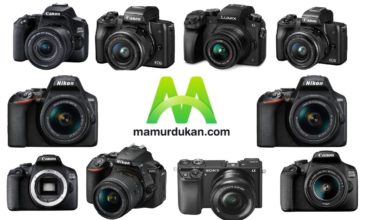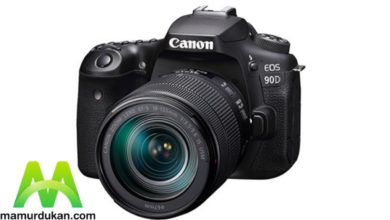| Price | 77000 BDT |
Canon EOS 850D Specs:
Image Sensor
| Type | 22.3 x 14.9mm CMOS |
| Pixels | Effective Pixels- Approx. 24.2 megapixels | Total Pixels- Approx. 24.7 megapixels | |
| Aspect Ratio | 3:2 |
Other Features
| Features | DIGIC 6 |
Focusing
| Af Point | 19 cross-type AF points (f/2.8 at center) |
| Modes | AI Focus, One-Shot, AI Servo |
Exposure Control
| Metering Modes | 7560-pixel RGB+IR metering sensor | Metering with the area divided into 63 segments (9×7)- (1) Evaluative metering (linked to all AF points) | (2) Partial metering (approx. 6.0% of viewfinder) | (3) Spot metering (approx. 3.5% of viewfinder) | (4) Center-weighted average metering | |
| ISO Sensitivity | AUTO(100-6400), 100-12800 in 1-stop increments | ISO can be expanded to H: 25600 | During Movie shooting: Auto (100-6400), 100-6400 (Whole stop increments) | ISO can be expanded to H: 12800 | |
Shutter
| Shutter Speed | 30-1/4000 sec |
Shooting
| Color Space | sRGB, Adobe RGB |
| Continuous Shooting | Max. Approx. 5fps. for approx. (speed maintained for approx. 940 images (JPEG)(Large/Fine(Quality 8) resolution.), 8 images (RAW))(Quoted burst rate is based on tests using a UHS-I memory card, with Canon’s testing conditions, ISO 100, Standard Picture Style. Maximum fps and buffer capacity may be reduced depending on the camera’s settings and light level Speed can vary depending on the subject, memory card brand and capacity, image recording quality, ISO speed, drive mode, Picture Style, Custom Functions, etc.) |
File Type
| Image Type | JPEG: Fine, Normal (Exif 2.30 compliant) / Design rule for Camera File system (2.0) | RAW: RAW (14bit, Canon original RAW 2nd edition) | Digital Print Order Format [DPOF] Version 1.1 compliant | |
| Image Size | JPEG 3:2: (L) 6000×4000, (M) 3984×2656, (S1) 2976×1984, (S2) 1920×1280, (S3) 720×480 | JPEG 4:3: (L) 5328×4000, (M) 3552×2664, (S1) 2656×1992, (S2) 1696×1280, (S3) 640×480 | JPEG 16:9: (L) 6000×3368, (M) 3984×2240, (S1) 2976×1680 (S2) 1920×1080, (S3) 720×480 | JPEG 1:1: (L) 4000×4000, (M) 2656×2656, (S1) 1984×1984, (S2) 1280×1280, (S3) 480×480 | RAW: (RAW) 6000×4000 | |
| Movie Type | MP4 (Video: H.264 (standard or lightweight: IPB), Sound: AAC, recording level can be manually adjusted by the user). |
| Movie Size | 1920 x 1080 (29.97, 25, 23.98 fps) | 1280 x 720 (59.94, 50, 29.97 fps) | 640 x 480 (29.97, 25 fps) | |
LCD Monitor
| Type | Touch screen vari angle 7.7cm (3.0″) 3:2 Clear View II TFT, approx. 1040K dots |
| Viewing Angle | Approx. 170° |
Storage
| Storage Type | SD, SDHC, or SDXC (UHS-I)card |
| Built-in Flash | Yes |
| Red-Eye Reduction | Yes – with red-eye reduction lamp |
| External Flash Compatibility | E-TTL II with EX-series Speedlites, wireless multi-flash support |
Power Source
| Batteries | 1 x Rechargeable Li-ion Battery LP-E17 |
Physical Specification
| Dimensions (W x H x D) | Approx. 131.9 x 100.7 x 77.8 mm |
| Weight (Body Only) | Approx. 555g |
Lens
| Lens Mount | EF/EF-S |
| Focal Length | 18-55mm |
| Maximum Aperture | f/4-5.6 |
Manufacturer Warranty
| Warranty | 03 Years Service Warranty (No parts warranty) |
Canon EOS 850D price in Bangladesh
Canon EOS 850D price in Bangladesh is BDT 77000 Taka. The newest EOS 850D marks the line’s twelfth generation and was firstly blazoned in February last time, although its appearance in the shops was heavily delayed by the coronavirus epidemic. The EOS 850D is about as good as you’ll get from a DSLR at this position but feels outdated compared to its lower, slicker mirrorless challengers. Canon really needs to suck the pellet and make a sucker- concentrated, SLR- style APS-C mirrorless model analogous to the Nikon Z 50, which is presently conspicuously lacking from its line-up. The only question is whether it should continue with the being EF-M mount or switch to the newer full-frame compatible RF mount rather.
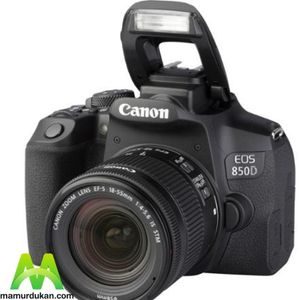
Build and Design of Canon EOS 850D
By DSLR standards, the EOS 850D is pretty little and lightweight. However, compared to APS-C mirrorless alternatives like the Nikon Z fifty, Fujifilm X-S10, or Canon’s own EOS M50, it’s by all odds bulky; so, it’s similar in dimensions to several full-frame mirrorless models. However, this has the advantage of providing an area for an outsized, snug grip and lots of external controls, most of that are clustered around the grip for straightforward access. Like alternative DSLRs at this value purpose, the EOS 850D is primarily created with a plastic body shell. however as was common for Canon, it feels nice and strong in your hand. You will expect it to require a scrap sort of a pro-level camera can – for a beginner, it’s not weather-sealed – however, you shouldn’t baby it an excessive amount of, either. The grip encompasses a rough-textured, rubberized coating with a well-defined area on the rear for your thumb. In terms of management layout, the camera is nearer to the EOS 77D than the EOS 800D. It sports a tiny low vertical rear dial that’s accustomed to set exposure compensation (or in manual mode, the aperture), besides an associate degree AF-ON

button for back-button focusing. the opposite rear controls are cleansed up compared to its predecessors, with one letter button higher than the rear dial rather than the previous cluster of 3 buttons, which makes it easier to use once holding the camera up to your eye. Beginners get a nicely designed guided program that will an affordable job of explaining the assorted functions, whereas a lot of advanced users will switch to Canon’s normal screens and menus, which are faster to use once you’ve got the droop of them. The rear screen shows a transparent and comprehensive standing show of the camera’s settings, whereas a press of the letter button allows you to pick and alter them. There’s no top-plate standing alphanumeric display as on the EOS 77D, however, I can’t say I uncomprehensible it. The camera’s biggest operational flaw lies with its slow and awkward methodology for moving the main target purpose once you’re shooting with the viewfinder. you initially ought to press a button on its right shoulder, then use the d-pad or management dials, which needs tons of thumb movement. This approach worked OK once Canon initially introduced multi-point AF within the Nineties with three or five points, however, is far less satisfactory after you have forty-five to settle on from. sadly, you’re not allowed to repurpose the d-pad to maneuver the AF space directly.
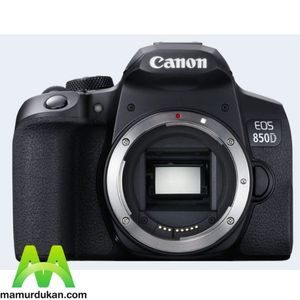
Screen & Viewfinder of Canon EOS 850D
For many photographers, the optical device is reason enough to decide on a DSLR over a mirrorless model. There is, the argument goes, nothing quite like seeing the planet through an outsized, bright, clear optical device. this might otherwise be true, however sadly, the Eos 850D’s pentamirror finder is none of those things. Instead, with simply zero.51x magnification and ninety-fifth coverage of the image space vertically and horizontally, it’s small, dim, and inaccurate. Compared to even the entry-level Eos M50’s electronic optical device, it’s like peering down a tunnel and attempting to form out a foreign visual percept. If you compose your pictures exactly whereas shooting, the likelihood is you’ll realize extraneous parts creep into your files that you just very wished to exclude. you’ll be able to, after all, crop these out later on to match your original composition, however, it’s a pain and you’ll find yourself with 21.7MP files. You do a minimum of getting a good quantity of settings info, alongside the choice to show gridlines and a single-axis electronic level. however, with no live bar graph or exposure preview, you only need to hope for the simplest with regards to metering and apply for exposure compensation in tough lighting supported guess and skill. Press the depth-of-field preview button on the lens throat, and therefore the finder goes darker still, thus you’ll be troubled to envision what it’s meant to be showing. Switch into living read, and therefore the viewing expertise is reworked. The rear digital display offers a 100 percent correct preview of your composition, whereas conjointly reflective this exposure and color settings. you’ll be able to choose exposure compensation supported each the preview image and a live bar graph, which may be set to show in RGB still as brightness. after you press the depth-of-field preview button you’ll be able to conjointly see what’s really occurring with regards to front-to-back sharpness. It’s a way higher suggests that of composing your pictures. Another advantage of exploitation live read is that the absolutely articulated screen permits you to shoot at high or low angles in each portrait and landscape format. All of the camera settings may be modified by exploitation of Canon’s excellent bit interface, which is fast and intuitive to use. The touchscreen is fantastically responsive, and its sensitivity may be boosted to be used with gloves.
Image Quality of Canon EOS 850D
The 24.1MP APS-C device may be a better-known entity, being found within the Canon EOS M50 and it’s just about constant unit within the precursor, the Greek deity 800D. As such, relating to outright image quality there extremely is no to decide on between these cameras. We did see associate degree progressive improvement in low light-weight image quality within the EOS M50 over the EOS 800D, and therefore the same applies here on the new Canon 850D. Again, there is a sensitivity vary of ISO one hundred to twenty-five,600 and no visible sign of noise up to ISO 1600. In RAW files wherever no noise reduction is applied, a grain seems at ISO 3200 and therefore the adverse impact of noise at ISO 6400 is principally seen through a minor color desaturation, with luminous noise still wanting uniform and thus still acceptable. Chroma noise is nearly absent at any ISO setting once shooting RAW format, though it’s seen in JPEG pictures from ISO twelve,800, and up. It’s a general rule of thumb that the highest 2 native ISO settings (ISO twelve,800 and ISO twenty-five,600 within the EOS 850D) square measure wherever the adverse impact of noise is ungainly and ideally avoided. Noise reduction in JPEG pictures strikes the proper balance – not too aggressive therefore on render excessively smeared detail, however not too cautious therefore on reign it on. the most drawback in JPEGs is intensity (color) noise at the high ISO settings. We have griped regarding the handling of 4K video, however, if its limitations square measure of no connection then you may appreciate a far crisper image than those fully HD. Hey, if you wish a lot of reaches, it’s even advantageous! The same vary of images designs and inventive Effects square measure accessible for pic and video, with six image designs and up to 3 custom presets. The Neutral image vogue is maybe best for video as a result of it leaves the foremost space for color enhancements post-capture. In general, we tend to wish to kick off by victimization the Neutral image vogue, however, if you want an affordable degree of saturation in photos then you are most likely at an advantage victimization the quality image vogue. For color rendition, overall Canon cameras square measure up there with the simplest in school. Skin tones in portraits, sunny skies, inexperienced landscapes, all rendered dependably.
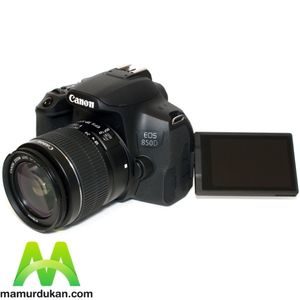
Canon EOS 850D Autofocus
Probably, the EOS 850D’s dissociative disorder becomes most acute when it comes to autofocus. Canon has clearly designed the viewfinder and lives read systems to appear as almost like one another as attainable, however, insensible use, they behave quite otherwise. Crucially, in live read, the camera will specialize in subjects nearly anyplace among the frame, whereas having the ability to trace them additional accurately, too. In different words, it works higher once it’s dissimulation to be mirrorless. In each viewing mode, Canon has provided a superficially similar set of 4 focus-area choice choices, that square measure toggled through employing a button before the mode dial. you’ll additionally choose from one-shot AF for static subjects, and servo for people who move. a 3rd AI Focus choice auto-switches between these once it detects subject movement, however, it’s solely offered once exploiting the viewfinder. Another oddity is that the viewfinder and live read AF settings square measure treated severally, therefore if you alter them for one viewing mode, this won’t be mirrored after you switch to the opposite. If you stick with exploitation comparatively small-aperture zooms, then you shouldn’t have too several optical device issues in either mode. The camera focuses quickly and resolutely and continues to figure well in dim indoor lighting. but if you utilize a quick prime like a 50mm f/1.8, then the AF is at risk of being slightly off once you’re exploiting the optical viewfinder, notably if you select AN off-center focus purpose. In distinction, the on-sensor AF that’s employed in live read is systematically additional correct.
Pros & Cons of Canon EOS 850D
Pros
- Small and lightweight for a DSLR
- A wealth of external controls and excellent touchscreen interface
- Good-sized, comfortable handgrip
- Performs really well in live view
Cons
- Tiny, inaccurate viewfinder
- Small, fiddly rear control dial
- Behaves completely differently between viewfinder and live view
- Slow, clunky focus point selection when using the viewfinder
If you are interested to watch some latest laptops which are available on the market, please check this out. Latest laptops in Bangladesh Also if you want to see the latest smartphones, please check these out!!! Smartphones Our information may not be 100% accurate. To clarify, you can visit their official site Canon
77,000 Taka
Pros
Small and lightweight for a DSLR, A wealth of external controls and excellent touchscreen interface, Good-sized, comfortable handgrip, Performs really well in live view
Cons
Tiny, inaccurate viewfinder, Small, fiddly rear control dial, Behaves completely differently between viewfinder and live view, Slow, clunky focus point selection when using the viewfinder
3 Years
As an entry-level DSLR camera, the Canon Eos 850D isn’t the littlest around. The Eos 250D and Nikon D5600 area units are each smaller and lighter. Mirrorless rivals area unit an extra proportion smaller, particularly in-depth and height. The Canon Eos 850D (also called the Canon Eos Rebel T8i) was declared in Feb 2020 Associate in Nursingd replaces the three-year-old Eos 800D because of the company’s higher entry-level DSLR camera with an APS-C detector, positioned on top of the Eos 250D and below the Eos 90D. These days there’s little or no activity during this sector of the camera market Associate in Nursingd an overall sense of stagnation. Both DSLR rivals, the Nikon D5600 and Pentax K-70, area unit four years recent currently. Put the Eos 850D up against the Eos 800D and there’s very little to settle on between them.

